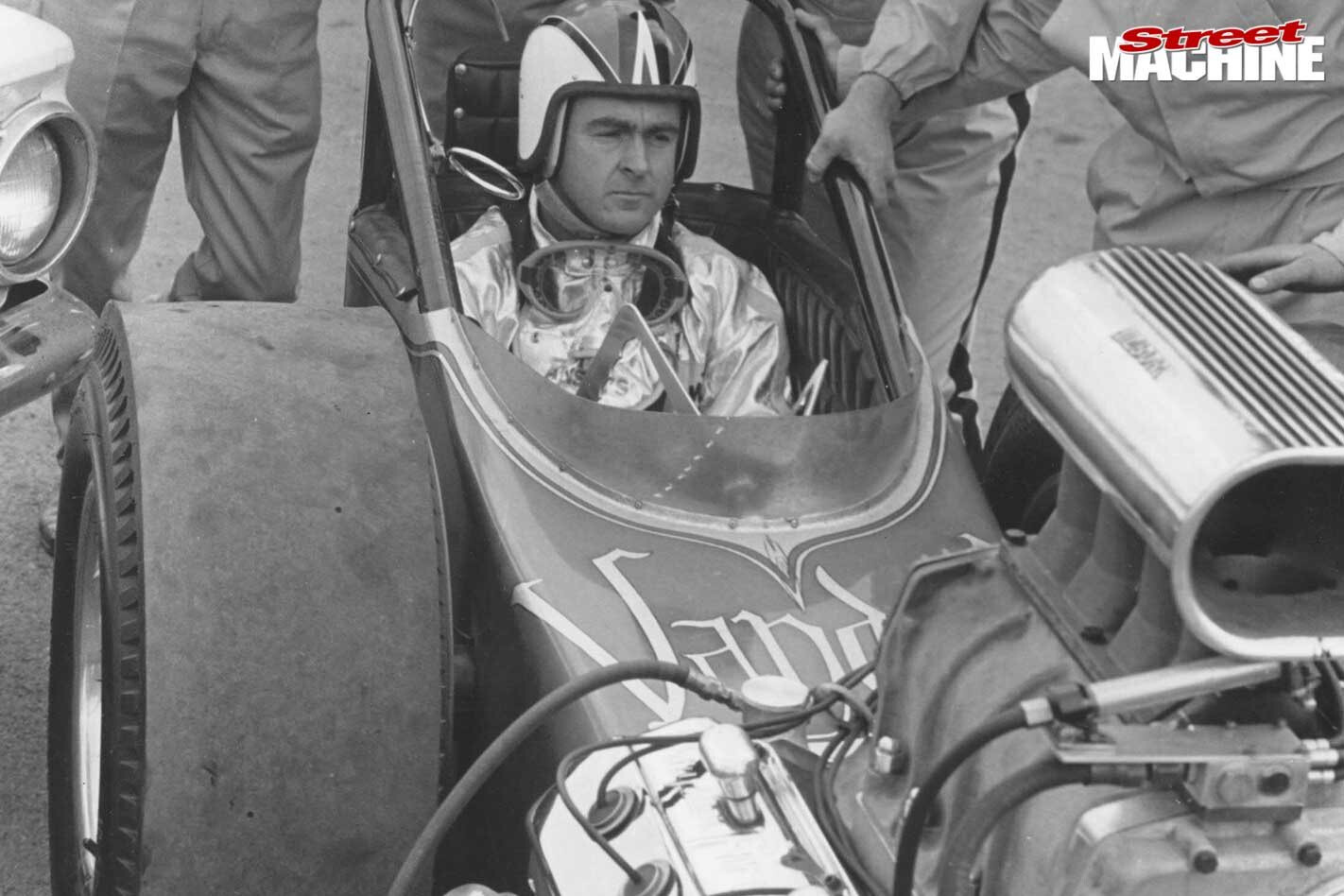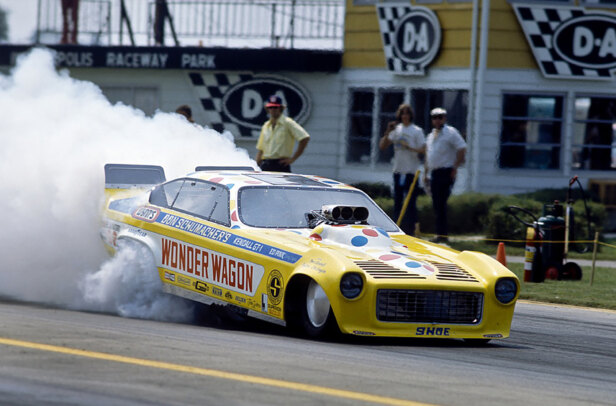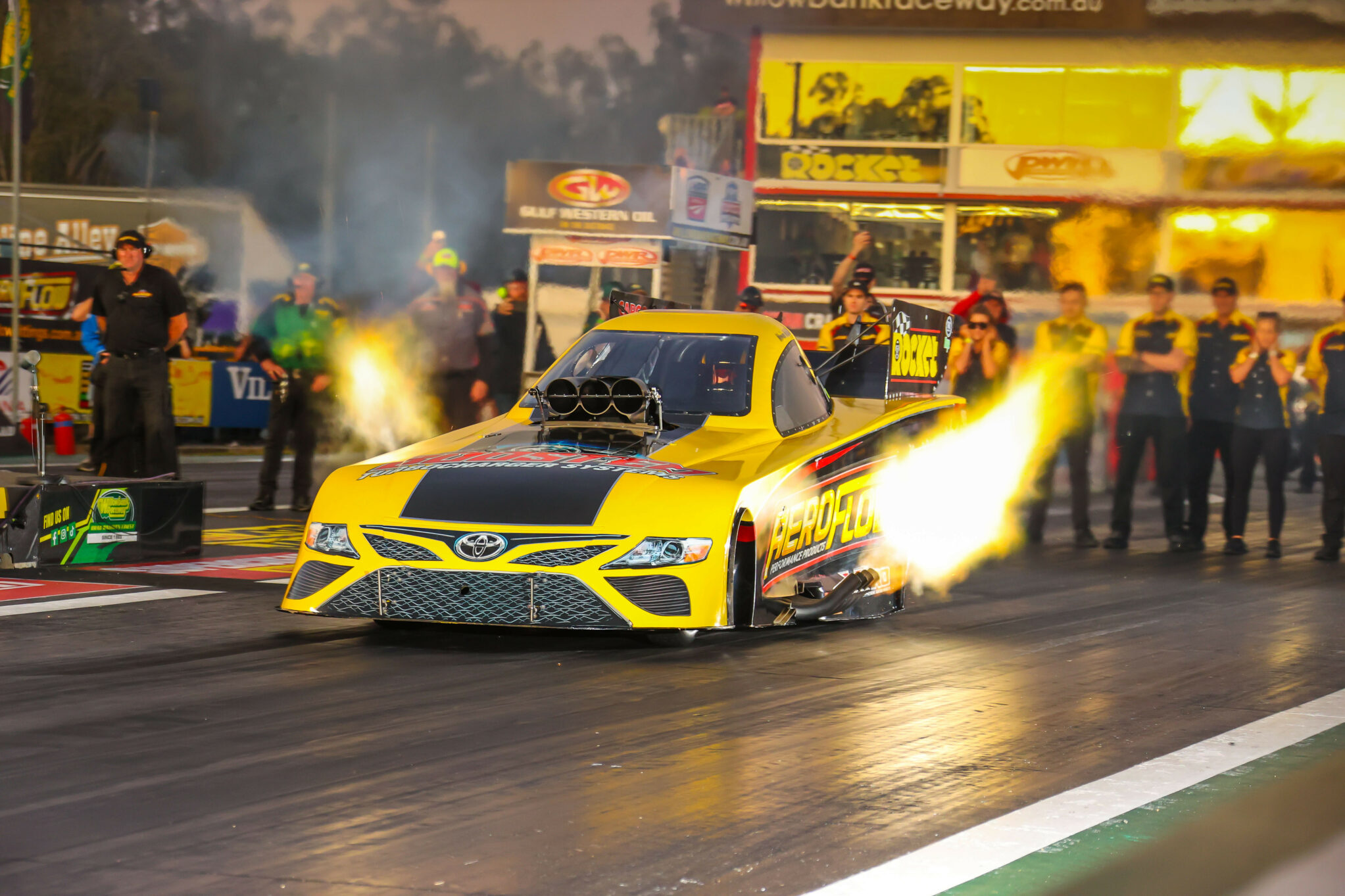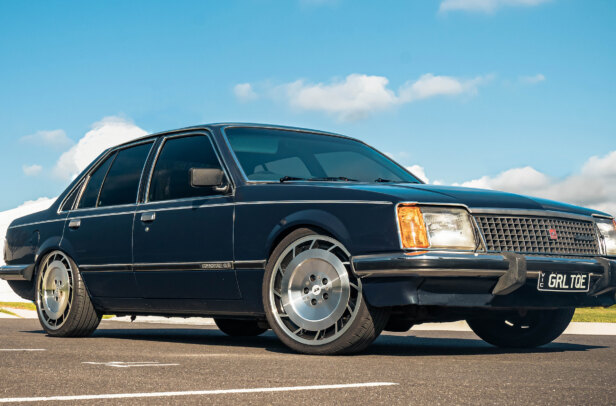This article on Ash Marshall was originally published in the March 2019 issue of Street Machine
IN THE 1960s and early 1970s, Ash Marshall bestrode the formative Australian drag racing scene like a colossus. Though he never won a national title, he ran his racing like a business, creating a motif that would be copied by numerous racers who followed him.
Marshall came up through the 1950s motor racing world in typical fashion, starting in speedway sedans and then a sprintcar before moving on to rallying and circuit racing, in everything up to and including a D-Type Jag in 1962. His introduction to drag racing would come in 1964 while on a buying trip to the USA, where he sought stock for his second-hand car business specialising in ‘luxury’ American vehicles.
His main US contact was Bob Fuerhelm, the workshop manager at a Pasadena Plymouth dealership and also a drag racer. Fuerhelm took Marshall to a race and organised a ride for him in a super stocker that went 11.7 seconds, and he was hooked. Seeing the fuellers run sealed the deal. “This, I knew, was the finest thing in motorsport I had ever seen,” Marshall would later relate. He was, he said, “just running around with my mouth open”.
Marshall bought himself two super stockers – a ’63 genuine factory performance Plymouth Savoy Max Wedge and a ’64 Plymouth Belvedere, with lots of factory performance extras. In November ’64, Fuerhelm flew in to drive one while Marshall drove the other. When Australia’s quickest dragster had just broken into the nines, these full-bodied sedans ran 12s and blew everyone away.
After just a few months, Marshall’s ambitions began to expand beyond those record-busting sedans. He sold both and flew back to the States to buy a dragster. He returned with an even-then outdated car. Called ‘The Vandal’, it had a short 137-inch wheelbase, full-length body, dropped I-beam front axle with transverse spring, and stunning paint. It was the first US-built dragster seen Down Under, and instantly jumped to headline status. As with the sedans, Marshall found that he could command a premium price for his appearances and the performance standard he set.
“I could see no point in going out and screwing my car up as hard as it would go on every run,” he would later say in a magazine interview.
“I gave the promoters what they were prepared to pay for. If they wanted a run in excess of 200mph, I could do it for them…but it would cost them more. An Australian record attempt would be more again.”
Marshall was ever the showman. On one occasion he shut off The Vandal’s engine on the startline. Officials found him slumped in the seat, apparently unconscious. He was lifted out onto the track in front of the concerned crowd, apparently overcome by the nitro fumes, except that rescuers noted one eye open to check that all attention was on him – and he got paid without even having to run the car down the track!
Marshall sold The Vandal to fellow Sydney racer Ross Mellish in 1968 and returned to the US to buy a vastly updated car, dubbed The Scorcher. At just its second meeting here it went 7.99, bettering The Vandal’s best of 8.25 by some measure, but crashed into the Armco in Calder’s braking area, causing severe front-end damage. Marshall blamed bumps in the track, but to this day event manager Jack Collins insists it was caused by the removable steering wheel coming off in Marshall’s hands.
The car was repaired without its fancy front bodywork and went on to become the first locally owned car to run 200mph, with a 203.66mph pass under previous owner Leland Kolb’s supervision in February 1969.
The Scorcher’s bests for Marshall were a 7.34 and a national-record 214.28mph, at Western Australia’s Ravenswood strip in October 1970.
At the end of 1970 Marshall sold The Scorcher and looked to be out of racing and the used-car game, as he moved into setting up a pyramid selling (Marshall called it ‘multi-level’) soap business called Golden Products for US racer Larry Huff. This was immensely successful for a short while, especially after Marshall returned to racing with a new rear-engined US-built car named ‘Soapy Sales’.
With American Lee Drake tuning the car, it supposedly ran 6.98@219mph at Castlereagh in December 1972, the first sub-seven-second pass, but the Australian Hot Rod Federation raised doubts about the legitimacy of the time. Marshall just shrugged and said he’d have to do it again.
The car only ran a handful of times before it was suddenly shipped back to the USA, possibly because the walls were closing in for Marshall. Pyramid selling schemes were made illegal here and the Golden Products empire evaporated. Marshall headed for the UK, where he set up the same deal in Europe.
That lasted a couple of years before pyramid schemes were declared illegal in Europe and he hotfooted it to America, apparently just in front of the authorities.
He settled in the US permanently, setting up a business buying and selling exotic vehicles for high flyers. He remained distant from the drag racing scene in Australia until the 1990s, when the nostalgia movement kicked off. He returned in 1995 for a gathering and was amazed that anyone remembered him.
Thereafter he was present at gatherings in California whenever Aussies were competing. In 2008 he was reunited with his old Scorcher, now in the hands of expat Dennis Young and restored by Sydney’s George Bukureshliev.
In 2016 he was inducted into the CAMS Motor Sport Hall of Fame.
Bad health dogged his later years. After suffering a major heart attack in Australia while travelling with his daughter in the late 1990s, he suffered a stroke in 2014 that left him severely disabled and unable to talk. His health continued to decline and he passed away in hospital in Tucson, Arizona on 23 January, aged 89.
Ash Marshall’s lasting legacy is the level of public profile that he brought to drag racing in Australia, being probably the first publicly recognised participant of the sport. His daughter’s summary of her father as being “larger than life” is as good an outline as we will get. He leaves an ex-wife and two children here and a wife and two more children in the US.
1. Eager crew members tend to The Vandal’s needs as Marshall prepares for an early lap down the Castlereagh quarter in 1965.
2. As an old circuit racer, Marshall enjoyed the prospect of setting sprint records. He blasted the NSW Sprint titles with The Vandal in 1968, making two passes in opposite directions at Castlereagh. Note the starter using a ‘pogo stick’-type timer under the front wheel to start the clocks.
3. Marshall with US team owner Larry Huff and Huff’s Steve Carbone-driven car in 1970. Marshall would later set up a pyramid selling company for Huff until such organisations were made illegal.
4. Marshall blamed bumps in the Calder Park braking area for his accident at the second meeting of The Scorcher’s Australian career, but track officials said it was due to the steering wheel coming off in his hands.
5. Marshall in The Scorcher got to race his old Vandal, which was being run by Ross Mellish and Bert Jones, at the 1969 Nationals.
6. Under lights, Marshall takes on his old enemy, Victorian Graham Withers, in a tyre-smoking contest at Castlereagh.
7. Marshall sits pensively in the cockpit of The Vandal at the Castlereagh strip in Sydney. Note the weed-burner headers and outdated square-style rollbar.
8. The crowd is rapt as Marshall gives it to The Vandal early in its career. He later abandoned the front-body, which tended to lift the front wheels at speed due to being open at the front.
9. Marshall in his ’64 Plymouth Belvedere racing against a hot rod at Castlereagh in July 1965. Known locally as Ramchargers, this and his ’63 Plymouth were light years ahead of anything else with doors when they first landed at the end of 1964.
10. Top Fuel cars in the late 60s and early 70s typically ran only low nitro doses – maybe less than 40 percent – to avoid stressing parts, as few carried much in the way of spares.
11. Marshall climbs aboard for his first public appearance in The Vandal at the first Nationals, at Riverside in Melbourne, October 1965.




Comments